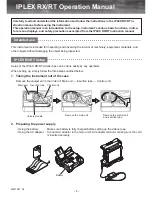
38
2. Menus, settings and functions
With Galileo you can choose between
workload (
WL
) estimation based on heart
rate (
HEART
, default) or based on changes
in the breathing pattern (
RESPIRATION
).
You can also have Galileo always choose
the highest between the two estimates
(
ALWAYS HIGHEST
), the lowest between
the two estimates (
ALWAYS LOWEST
) or
you can turn it
OFF
completely. If you turn
it
OFF
, Galileo will behave like an UWATEC
Aladin PRIME dive computer.
If you choose
WL
=
HEART
, you must
personalize the algorithm adaptation by
entering your maximum heart rate and your
base heart rate while diving. If you do not
know your maximum heart rate, a good
approximation is given by subtracting your
age (in years) from 220. For instance, a 35-
year old would have a maximum heart rate
of 185 beats per minute. To determine the
base heart rate, use Galileo in its default
setting on a relaxed, unstressed dive, then
look up the average heart rate in the logbook
(see section 2.12) or, better yet, download
the dive to a PC using SmartTRAK
(described in Chapter 4), then observe the
heart rate profi le during the dive. For the
example shown below, the base heart rate
is approximately 100-110bpm.
If you choose
WL
=
RESPIRATION
, Galileo
will observe your breathing pattern during
the fi rst two minutes of each dive, and use
that as a reference. Any increase in breathing
with respect to that initial pattern will be
interpreted as an increase in workload.
If you choose
RESPIRATION
or
OFF
, you
can also choose whether you want to keep
the heart rate monitor
ON
(to display the
heart rate on the screen and to log it in the
memory), or if you prefer to have it
OFF
.
If
WL
is set to
HEART
or
ALWAYS
HIGHEST
, the computer display will show
HEART
+ instead of just
HEART
. If
WL
is set
to
ALWAYS LOWEST
, the computer display
will show
HEART
- instead of just
HEART
.
If
WL
is set to
RESPIRATION
or
OFF
and
the heart rate monitor is set to
OFF
, the
computer display will show
HEART OFF
.
If
WL
is set to
RESPIRATION
or
ALWAYS
HIGHEST
, the computer display will show the
tank pressure with a + next to the unit (
BAR
+ or
PSI
+). If
WL
is set to
ALWAYS LOWEST
, the
computer display will show the tank pressure
with a – next to the unit (
BAR
- or
PSI
-).
If Galileo detects a suffi cient increase in
workload, no-stop times can suddenly
shorten and decompression stops can quickly
grow. To alert you of such possibility, upon
entering into an increased workload situation,
Galileo warns you with an audible sequence
while displaying the message
INCREASED
WORKLOAD
for 12 seconds. Unless you
have selected
WL
=
RESPIRATION
, an
INCREASED WORKLOAD
situation is also
signaled throughout its duration by the heart
rate being displayed in inverted colors (white
on a black background).
Summary of Contents for Galileo sol
Page 1: ...English ...
Page 2: ......
















































